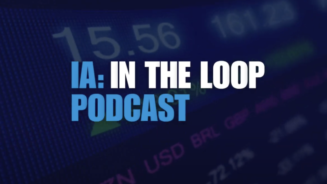Best of the rest
Other key changes from the Budget that could affect you and your clients include:
£1m IHT allowance on property. An additional nil-rate IHT band will apply when a residence is passed on death to a direct descendant: children – step, adopted or fostered – or grandchildren. The headline rate of £1m is based on the £325,000 nil-rate band of both spouses plus a new additional property IHT band for both spouses. The additional nil-rate band will be £100,000 in 2017-18; £125,000 in 2018-19, £150,000 in 2019-20 and £175,000 in 2020-21. This will then rise in line with the Consumer Prices Index from 2021-22 onwards. Any unused additional nil-rate band will be transferable to a surviving spouse or civil partner.
The additional nil-rate band will also be available when a person downsizes or ceases to own a home on or after 8 July 2015.
There will be a tapered withdrawal of the additional nil-rate band for estates with a value of over £2m, at a withdrawal rate of £1 for every £2 above this threshold.
Personal representatives will be able to nominate which residential property should qualify if there is more than one in the estate. A property that was never a residence of the deceased, such as a buy-to-let, will not qualify.
This detail was published in the Finance Bill on 15 July and includes 10 new pages of legislation, adding further complexity to the estate-planning process.
Nil-rate band frozen until the end of 2020-21. The existing nil-rate IHT band will remain at £325,000 until the end of 2020-21. It has been frozen since April 2009.
Simplifying charges on trusts. The Budget and subsequent Finance Bill (on 15 July) confirmed that multiple trusts can continue to benefit from multiple nil-rate IHT bands provided they are set up (and topped-up) on different days. If each trust is less than £325,000 then there is no IHT to pay.
The recent changes made to trusts to help simplify the periodic charge calculation will also remain in place and will help to make life easier for those approaching their first 10-year anniversary.
Dividend taxation. From April 2016, Dividend Tax Credit will be abolished. To replace this, a Dividend Tax Allowance of £5,000 per tax year will be introduced. The new rates of tax on dividend income will be 7.5% for basic-rate taxpayers, 32.5% for higher-rate taxpayers and 38.1% for additional-rate taxpayers.
Immediate change to the annual allowance for 2015/16. From 2016/17, pension input periods will be aligned with tax years. To make this happen, the Government is making changes to the annual allowance for 2015/16 with effect from 8 July 2015.
Annual allowance changes for April 2016/17. The Government is pushing ahead with its manifesto pledge to reduce the tax relief on pension contributions for people with an income of more than £150,000. Their annual allowance will reduce by 50p for every £1 of income in a range between £150,000 and £210,000+, so that someone with an income of £210,000 or more will have an annual allowance of £10,000.
The definition of income is not the same as taxable income but will include the value of pension savings to ensure salary sacrifice arrangements cannot be used as a method to avoid the restriction.
Taxation of lump-sum death benefits. There is currently a 45% tax charge on pension lump-sum death benefits paid after two years, or in respect of a member who died after age 75. From April 2016, the tax payable on lump sums paid after two years or post age 75 will be based on the marginal rate of the recipient, with the exception of lump sums paid to non-individuals, such as trusts or companies, for which the rate will remain at 45%.
This is also relevant for pension money held in a QROPS, where the member dies within five years of leaving the UK.
The chancellor is continuing to look at the UK pension industry and has launched a Green Paper to consult on the future of pension tax relief. Pension contribution rates are the biggest driver in generating retirement income, so the consultation is arguably more significant than the pension freedoms that came in this year.




